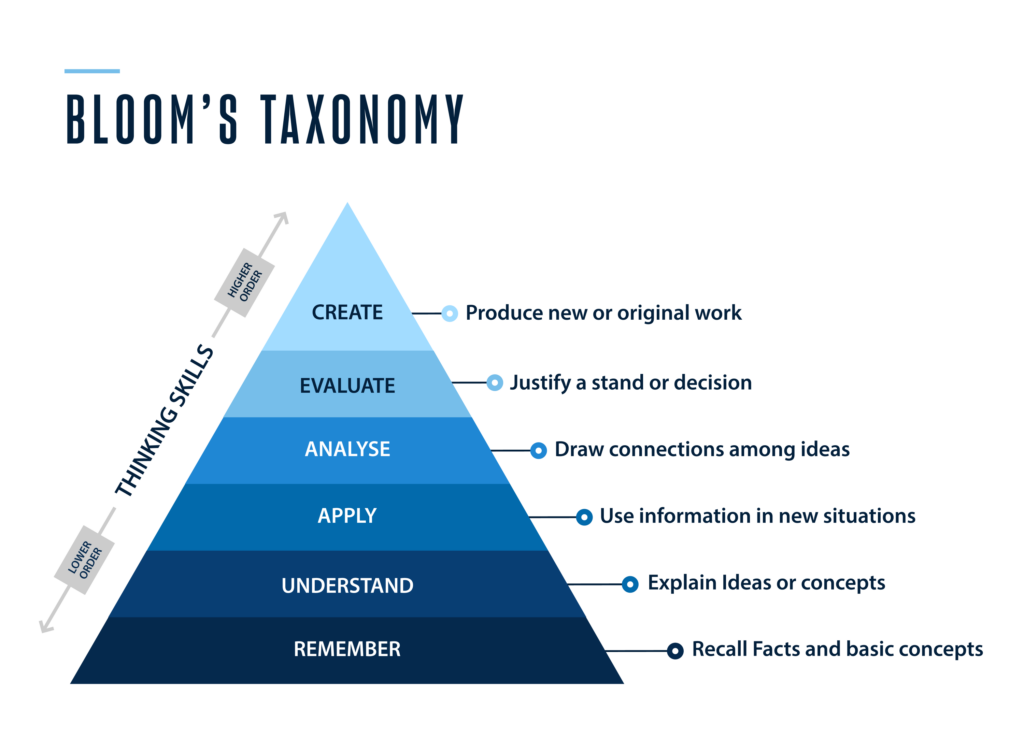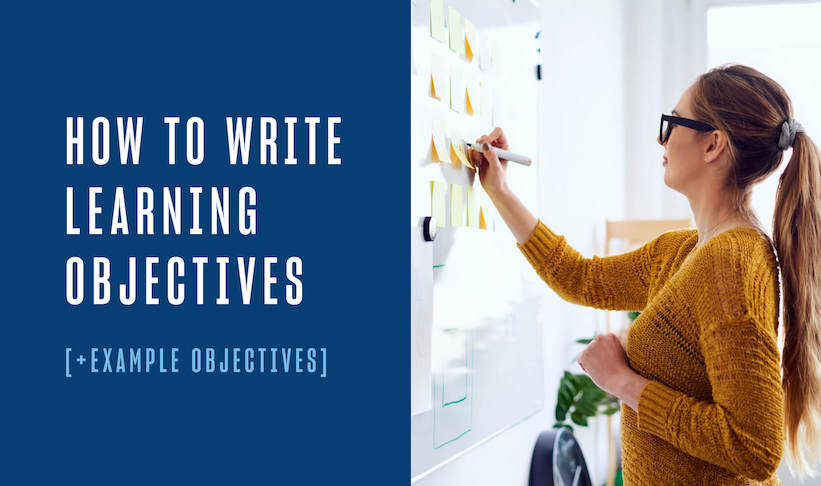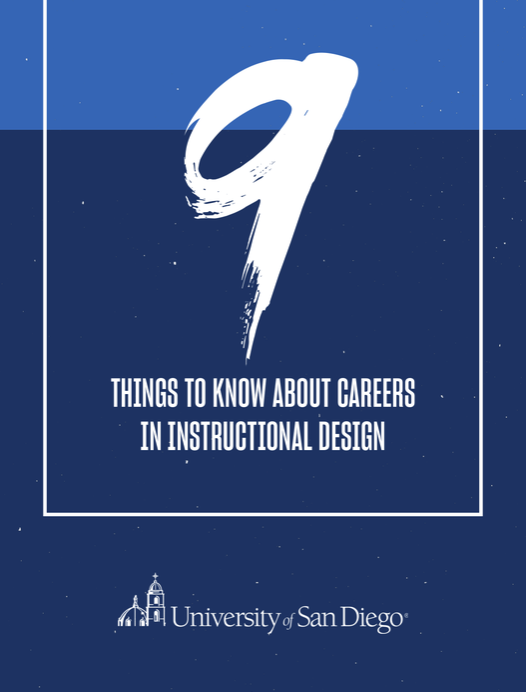Crafting clear and effective learning objectives is fundamental for instructional designers, educators and corporate trainers. These objectives lay the groundwork for lesson plans, assessments and overall educational success. When learning objectives are well-defined, they provide a clear direction for both instructional designers and learners, making it easier to track progress and measure outcomes.
Keep reading to learn more about these essential instructional design components, including the skills needed to develop them and example learning objectives to help you design more impactful learning experiences.
What Are Learning Objectives?
Learning objectives are specific statements that define what learners should know or be able to do by the end of a learning session, whether in the classroom, in corporate settings or any other scenario where learning takes place. They are crucial for ensuring that educational activities are focused and effective.
The primary purposes of learning objectives are to:
- Communicate knowledge, skill, and attitude outcomes by clearly stating what learners will be able to do by the end of the learning period.
- Clarify learning outcomes by providing specific criteria for assessing learner performance.
- Set expectations by using precise action verbs to describe expected learner behaviors.
Learning objectives are important because they:
- Guide instruction by helping instructional designers develop learning plans, select learning content and design activities that align with general learning goals,
- Measure progress by enabling instructional designers to assess whether learners are meeting the desired learning outcomes and
- Provide clarity by offering learners a clear understanding of what they need to accomplish to succeed and how to track their progress.
How to Write a Learning Objective
Writing learning objectives is a critical skill that ensures educational activities are focused and learner outcomes are measurable. Follow these steps to create well-defined learning objectives:
1. Identify the Learning Goal
Begin by determining the broader learning goal you want to achieve, whether it’s related to a specific skill, knowledge area or behavioral change you want learners to acquire.
2. Choose Action Verbs Carefully
Use action verbs that accurately reflect observable behavior and/or performance. These verbs should correspond to the cognitive level of Bloom’s Taxonomy (e.g., remember, understand, apply, analyze, evaluate, create).
3. Create a Learning Objective Statement
Develop a clear statement that describes how to achieve the goal. This statement should articulate the specific actions or behaviors learners will demonstrate.
4. Review and Refine
Assess your objective statements to ensure they are specific, concise, measurable and attainable. Refine the statements to align with the desired learning goal and ensure they accurately represent the skills or knowledge learners need to demonstrate.
Bloom’s Taxonomy & Writing Learning Objectives (Examples Included)
Bloom’s Taxonomy is a hierarchical framework that instructional designers use to classify learning objectives by levels of complexity and specificity. This model helps instructional designers identify appropriate cognitive activity levels and select appropriate verbs when writing learning objectives.HA3
Levels of Bloom’s Taxonomy
Bloom’s Taxonomy comprises six levels, each representing a different level of cognitive processing:

Using Bloom’s Taxonomy to Write Learning Objectives
When writing learning objectives, you should select verbs that accurately reflect the cognitive level required to demonstrate acquisition of new knowledge and skills. Here’s a closer look at each level with learning objective examples:
| Bloom’s Taxonomy Level | Objective |
|---|---|
| Create | Learners will design a new marketing campaign for a product. |
| Evaluate | Learners will critique a peer’s project based on a set of criteria. |
| Analyze | Learners will compare different theories of learning. |
| Apply | Learners will use statistical software to analyze research data. |
| Understand | Learners will summarize the key points of a scientific article. |
| Remember | Learners will identify the major parts of a cell. |
This framework helps instructional designers ensure their learning objectives are appropriately challenging and aligned with the desired learning outcomes. By applying Bloom’s Taxonomy, instructional designers can create more effective and measurable learning objectives that enhance teaching and learning experiences.
7 Example Learning Objectives
Learning objectives are pertinent across various learning situations, environments and student demographics. Here are seven writing learning objectives examples from different contexts:
| Learning Environment / Industry | Objective |
|---|---|
| Higher Education: Computer Programming | After eight weeks of intermediate Python program instruction, learners will design and implement a fully functioning game using the Pygame library. |
| Corporate Training: Project Management | Participants will create a project timeline using Gantt charts and set key milestones for project deliverables. |
| Corporate Training: New Employee Onboarding | Learners will complete the onboarding program and demonstrate understanding of company policies and procedures by passing the orientation quiz with a score of 90% or higher. |
| Healthcare: Community Wellness Education | Participants will identify three stress management techniques and practice each one during weekly sessions. |
| Healthcare: Emergency Response | Participants will demonstrate the correct procedures for CPR and the use of an automated external defibrillator (AED) in a simulated emergency scenario. |
| Non-Profit: Volunteer Training | Volunteers will learn and apply effective communication strategies to engage and motivate community members during outreach programs. |
| Non-Profit: Fundraising | Learners will create and execute a campaign plan that increases donor engagement by 15% over six months. |
These examples show how learning objectives can apply to different settings and audiences, from higher education and corporate training to internships and early childhood education.
Your Next Steps in Instructional Design
Effective learning objectives are crucial for successful teaching and training. By mastering the art of writing effective learning objectives and utilizing Bloom’s Taxonomy, you can create impactful and measurable educational experiences.
If you’re ready to advance your career in instructional design, consider the 100% online Master of Science in Learning Design and Technology at the University of San Diego. This program offers a comprehensive curriculum designed to prepare you for success.
Ready to take the next step? Download the eBook, 9 Things to Know About Careers in Instructional Design, and discover valuable insights and tips to help you find the role that suits you.




![What Does an Instructional Designer Do? [Career Info & FAQs]](https://onlinedegrees.sandiego.edu/wp-content/uploads/2021/08/ldt_blog_whatdoesiddo-1024x576.png)
